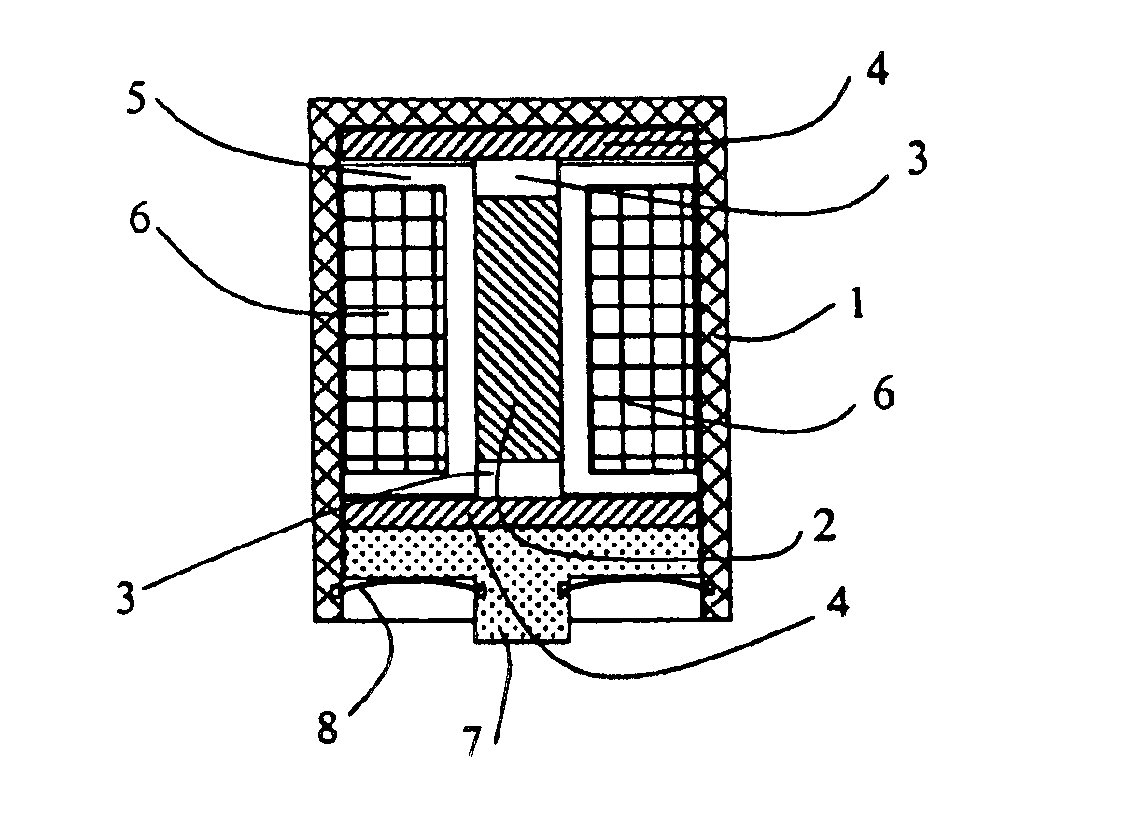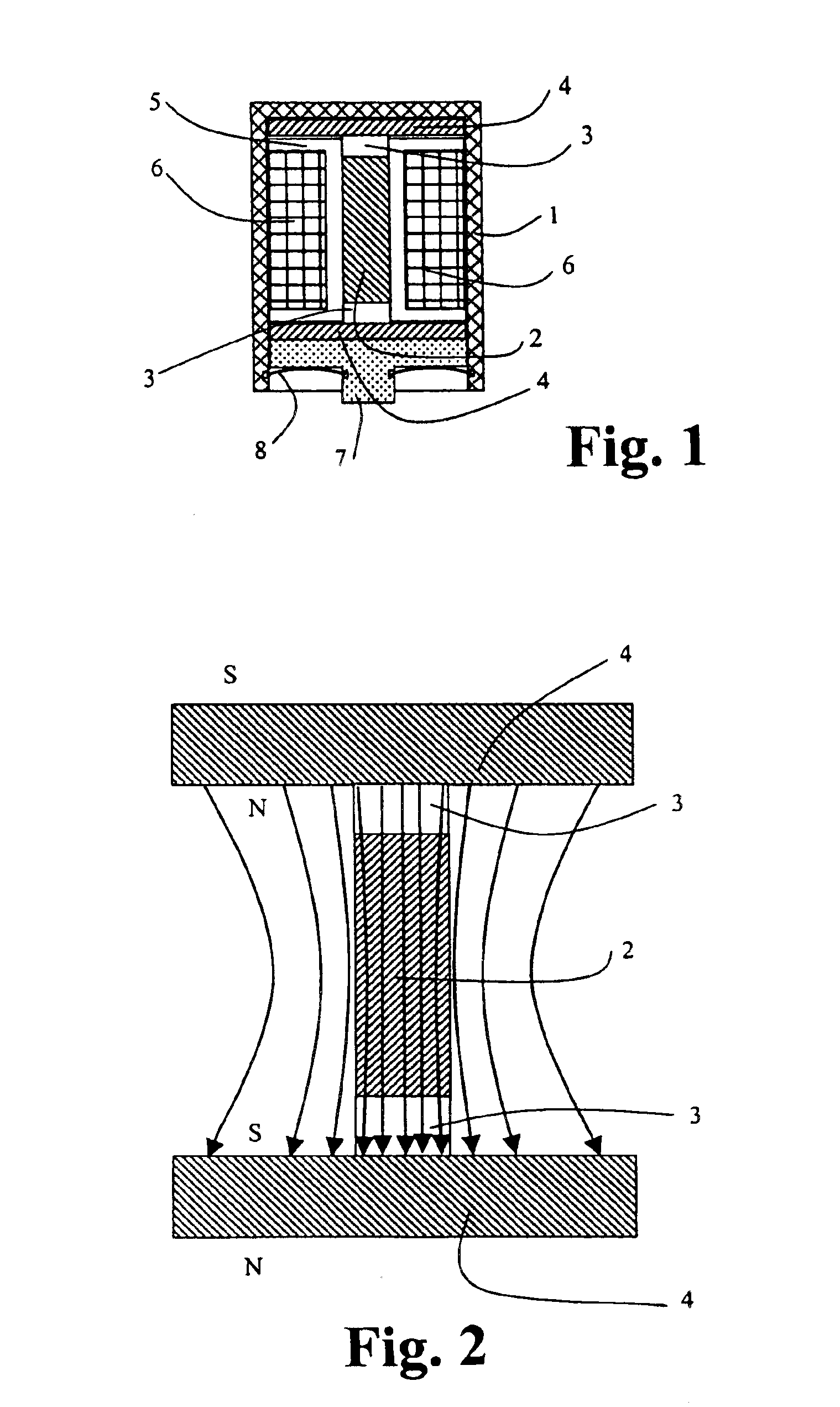Magnetostrictive actuator
a magnetic field and actuator technology, applied in the direction of generator/motor, device details, transducer diaphragms, etc., can solve the problems of inability to generate the necessary magnetic field to cause the change in length of the giant magnetostrictive material (gmm) and previously been impractical for portable domestic use, and achieve the effect of improving the acoustic coupling, small size and weight, and small current consumption
- Summary
- Abstract
- Description
- Claims
- Application Information
AI Technical Summary
Benefits of technology
Problems solved by technology
Method used
Image
Examples
Embodiment Construction
[0065]The magnetostrictive actuator shown in FIG. 1 comprises a casing 1, for example of a non-magnetic material, in which is located a rod 2 of giant magnetostrictive material (which for convenience may comprise two pieces of the GMM, end-to-end), with a non-magnetic spacer 3, for example of aluminium or a ceramic material capable of transmitting force, disposed at each end thereof to space the GMM rod 2 from a pair of disc magnets 4 of substantially greater diameter than the width of the rod. A plastics core 5 serves to locate and hold the GMM rod 2 and spacers, and carries an electromagnetic winding 6 which is connected via wires (not shown) to a separate energising signal source. A foot 7 transmits the force produced by the actuator to the desired location. A spring clip 8 held in grooves around the inside of the casing 1 and the foot 7 holds the assembly together and imposes a mechanical pre-stress on the GMM rod 2.
[0066]As may be seen more clearly from FIG. 2, by selecting dis...
PUM
 Login to View More
Login to View More Abstract
Description
Claims
Application Information
 Login to View More
Login to View More - R&D
- Intellectual Property
- Life Sciences
- Materials
- Tech Scout
- Unparalleled Data Quality
- Higher Quality Content
- 60% Fewer Hallucinations
Browse by: Latest US Patents, China's latest patents, Technical Efficacy Thesaurus, Application Domain, Technology Topic, Popular Technical Reports.
© 2025 PatSnap. All rights reserved.Legal|Privacy policy|Modern Slavery Act Transparency Statement|Sitemap|About US| Contact US: help@patsnap.com



